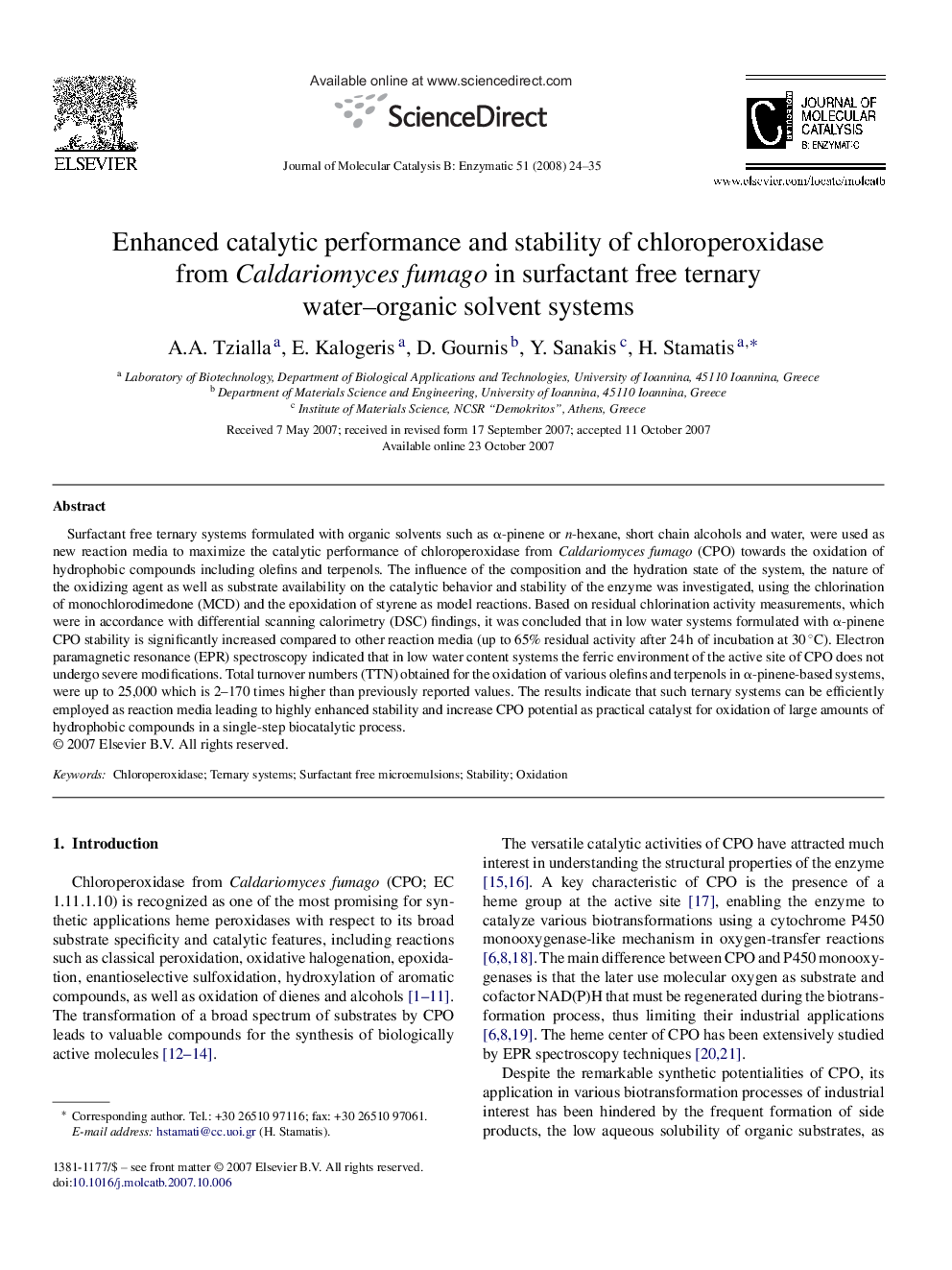| Article ID | Journal | Published Year | Pages | File Type |
|---|---|---|---|---|
| 70907 | Journal of Molecular Catalysis B: Enzymatic | 2008 | 12 Pages |
Surfactant free ternary systems formulated with organic solvents such as α-pinene or n-hexane, short chain alcohols and water, were used as new reaction media to maximize the catalytic performance of chloroperoxidase from Caldariomyces fumago (CPO) towards the oxidation of hydrophobic compounds including olefins and terpenols. The influence of the composition and the hydration state of the system, the nature of the oxidizing agent as well as substrate availability on the catalytic behavior and stability of the enzyme was investigated, using the chlorination of monochlorodimedone (MCD) and the epoxidation of styrene as model reactions. Based on residual chlorination activity measurements, which were in accordance with differential scanning calorimetry (DSC) findings, it was concluded that in low water systems formulated with α-pinene CPO stability is significantly increased compared to other reaction media (up to 65% residual activity after 24 h of incubation at 30 °C). Electron paramagnetic resonance (EPR) spectroscopy indicated that in low water content systems the ferric environment of the active site of CPO does not undergo severe modifications. Total turnover numbers (TTN) obtained for the oxidation of various olefins and terpenols in α-pinene-based systems, were up to 25,000 which is 2–170 times higher than previously reported values. The results indicate that such ternary systems can be efficiently employed as reaction media leading to highly enhanced stability and increase CPO potential as practical catalyst for oxidation of large amounts of hydrophobic compounds in a single-step biocatalytic process.
